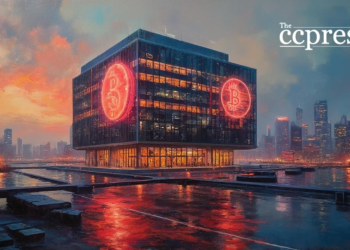L2 Tokens Face Valuation Bubble and Vote Manipulation Risks
 2025/06/27 00:11
2025/06/27 00:11The Layer-2 (L2) token market is gaining attention for enhancing Ethereum’s scalability, but sky-high valuations raise questions about their true value.
Fierce competition among existing L2 projects and newcomers like INK brings opportunities and significant risks in 2025.
The Potential of L2 Tokens
With Ethereum (ETH) still facing limitations, Layer-2 projects are increasingly vital for improving scalability. Vitalik Buterin has introduced a new Ethereum roadmap focused on enhancing the security, finality, and scalability of Layer 2 solutions.
A recent analysis by Ignas on X provides a comprehensive view of the current L2 token market.
The first key aspect is the fees generated by L2 projects. According to Ignas, annual fees from L2 blockchains show stark disparities: Arbitrum One leads with $19.5 million, Optimism at $18.3 million, zkSync earns just $1.3 million, and Starknet approximately $600,000.
 Blockchain L2s’ fees. Source:
Ignas
Blockchain L2s’ fees. Source:
Ignas
This gap reflects the uneven scale and adoption among L2 projects, with Arbitrum and Optimism dominating, while Starknet remains in early development.
Another critical factor is the Fully Diluted Valuation (FDV) to fees ratio. Ignas calculates Arbitrum’s ratio at 137.8x, Optimism at 205.7x, and Starknet at 4,204x.
These shocking figures prompt questions about the rationality of current valuations. For context, Tesla’s P/E ratio is 187x, and the S&P 500 average is 29x, showing L2 tokens are valued far beyond traditional companies.
“This makes L2 tokens overvalued by a lot. Unless we expect their adoption and fees to pick up massively,” Ignas noted.
Ignas argues that with Arbitrum’s $19.5 million annual fees, this revenue is too modest to justify current valuations, especially as operational costs and competition among L2s rise. This raises doubts about whether strong fee growth and adoption can justify their value.
“The landscape of infra tokens, both L1 and L2, are largely uncreative and are massively mispriced if the value they capture is solely the thing being driven to zero (tx fees)” An other X user shared.
Governance Role and Manipulation Challenges
Beyond fee sharing, the governance role of L2 tokens is a key driver. These tokens allow holders to participate in strategic decisions, such as Arbitrum’s DRIP proposal, which allocates $80 million in ARB for incentives to attract liquidity and drive growth.
However, Ignas highlights that governance mechanisms are being distorted by manipulation. Through platforms like Lobby Finance, just 5 ETH (about $10,000) can control 19.3 million ARB (around $6.5 million). This vote-buying undermines the true value of governance, diminishing the incentive to hold tokens for this purpose and raising concerns about system transparency.
Overall, the prospects of L2 tokens hinge on future fee growth and adoption. With the Pareto principle (80/20), only 20% of L2s may capture 80% of liquidity, suggesting that only a few projects like Arbitrum, Optimism, or Base will endure long-term.
However, the continuous emergence of new L2s, alongside liquidity mining strategies like INK, may delay the identification of winners. In this context, investing in L2 tokens carries high risks, requiring investors to wait patiently for clear differentiation among projects. Yet, with the potential of L2 technology, this remains a noteworthy field, provided investors understand the associated risks and opportunities.
“So, perhaps we need to wait until the L2 winners become clear and then invest in them,” Ignas shared.
Disclaimer: The content of this article solely reflects the author's opinion and does not represent the platform in any capacity. This article is not intended to serve as a reference for making investment decisions.
You may also like
Norges Bank Increases Bitcoin Exposure by 192% in Q2

Norwegian Sovereign Fund Boosts Bitcoin Holdings 192% YOY

Belo Horizonte Approved as Bitcoin Hub by City Council

Norway’s Wealth Fund Doubles Indirect Bitcoin Exposure
